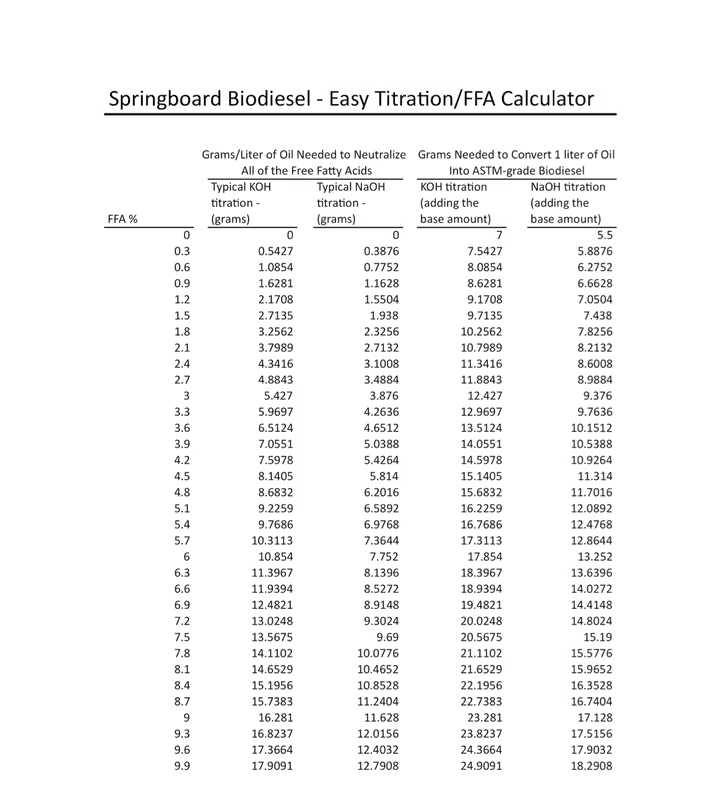Summary of Titration Methodologies
We receive a lot of questions regarding “grease quality” and we’ve discovered that people titrate their oil in a number of different ways. As a result, Springboard Biodiesel, LLC always refers to the Free Fatty Acid (FFA) percentage of the oil, and we don’t encourage people to try and process oil in excess of 5% FFA (we also don’t encourage people to eat at restaurants that allow their grease to reach 5% FFA – and we’re not gourmands).
However, in order to clarify the various titration techniques and, importantly, results, we’ve put together the following cheat sheet.
FFA
Self explanatory. You’re looking for less than 5%. The lower the better.
Typical KOH titration
This will tell you how much KOH (in grams of KOH per liter of waste oil) you will need to completely neutralize the FFA of your oil. Thereafter, you will add a “base” amount to turn the fully neutralized grease into ASTM-compliant biodiesel (in a BioPro™, of course, we have taken care of you by supplying an exact recipe for all BioPro™ batches assuming 5% FFA or less oil)
Typical NOH titration
As with the method above, this reveals how much NaOH (again In grams of NaOH per liter of waste oil) you will need to completely neutralize the FFA of your oil. Thereafter, you will add a “base” amount to turn the fully neutralized grease into ASTM-compliant biodiesel (in a BioPro™, of course)
KOH titration + base
Here the titrator is adding the base amount needed to turn his/her grease into ASTM-compliant biodiesel (If you subtract 7 – the KOH base number – from all of the results you will see the same number as listed under “Typical KOH Titration”). While 7 grams is somewhat subjective, it represents a solid average for small-scale biodiesel producers)
NaOH titration + base
Results reflect the addition of 5.5, the base number. Same methodological rationale as above – same “solid average” for 5.5 grams
Remember that the water content of all oils is key. The less water, the better the reaction!













.svg)
